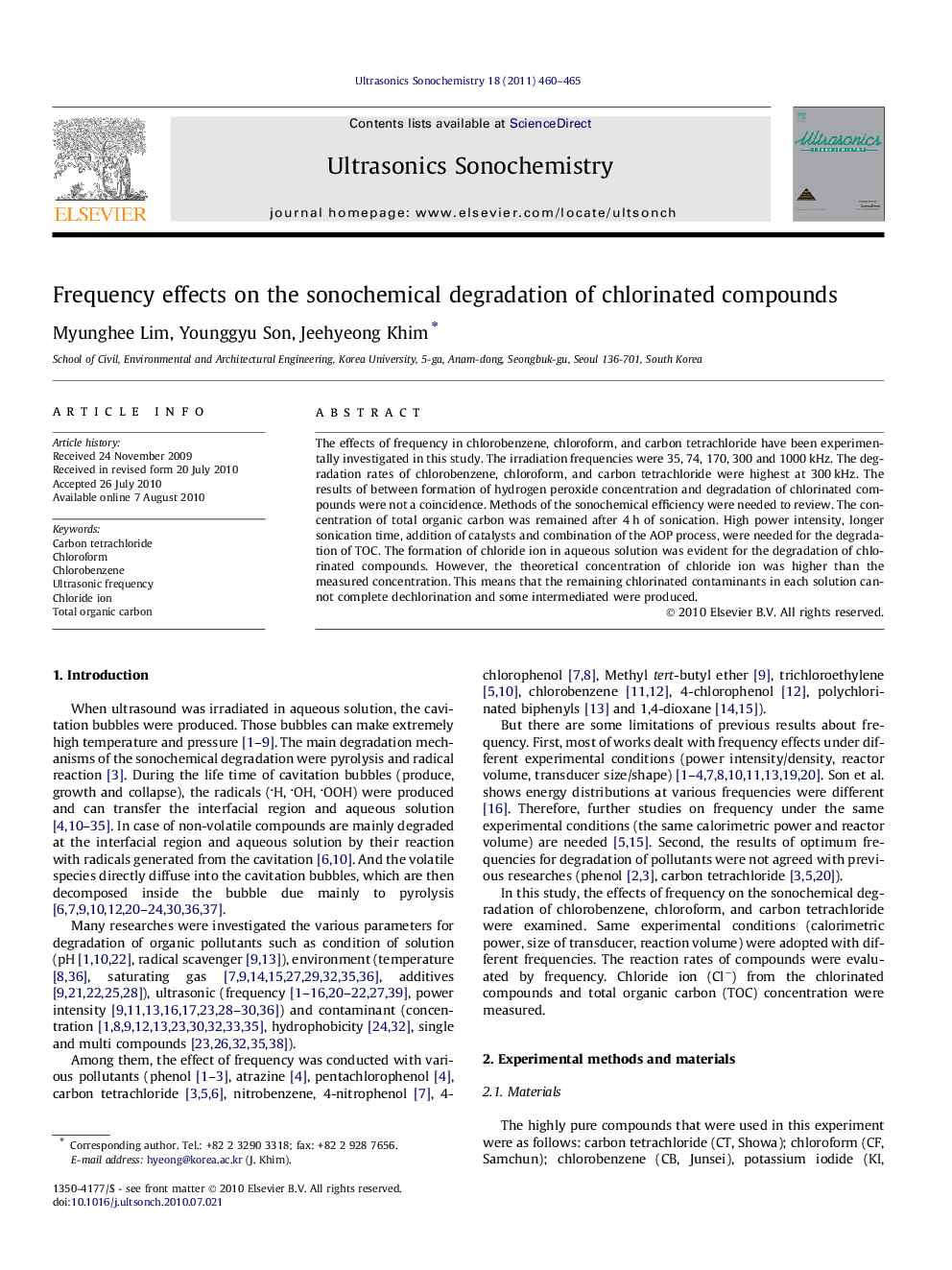| Article ID | Journal | Published Year | Pages | File Type |
|---|---|---|---|---|
| 1266428 | Ultrasonics Sonochemistry | 2011 | 6 Pages |
Abstract
The effects of frequency in chlorobenzene, chloroform, and carbon tetrachloride have been experimentally investigated in this study. The irradiation frequencies were 35, 74, 170, 300 and 1000Â kHz. The degradation rates of chlorobenzene, chloroform, and carbon tetrachloride were highest at 300Â kHz. The results of between formation of hydrogen peroxide concentration and degradation of chlorinated compounds were not a coincidence. Methods of the sonochemical efficiency were needed to review. The concentration of total organic carbon was remained after 4Â h of sonication. High power intensity, longer sonication time, addition of catalysts and combination of the AOP process, were needed for the degradation of TOC. The formation of chloride ion in aqueous solution was evident for the degradation of chlorinated compounds. However, the theoretical concentration of chloride ion was higher than the measured concentration. This means that the remaining chlorinated contaminants in each solution cannot complete dechlorination and some intermediated were produced.
Keywords
Related Topics
Physical Sciences and Engineering
Chemistry
Chemistry (General)
Authors
Myunghee Lim, Younggyu Son, Jeehyeong Khim,
